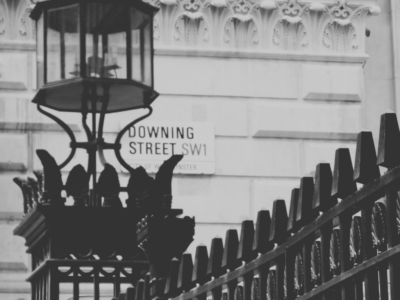Inventories play a vital role in protecting tenants from the dangers of house fires, according to a leading industry figure.
With rescue services attending 33,390 domestic fires last year in Great Britain, Daniel Evans, chair of the Association of Independent Inventory Clerks believes running through safety protocols at check-in and conscientious monitoring during tenancies can prevent fires and, potentially, save lives.
He said:
“As far as fire safety is concerned, there are two things at play for landlords.
Obviously, there is the minimum compliance checks required by legislation.
But there are also additional measures that can be taken to further reduce the risk of fire and keep tenants safe.
And the inventory process is the ideal opportunity to check things out.”
The Regulatory Reform (Fire Safety) Order 2005 requires landlords to “eliminate or reduce the risk of fire as far as is reasonably practical”.
The Smoke and Carbon Monoxide Alarm (Amendment) Regulations 2022 stipulate that all landlords must make sure there’s at least one smoke alarm on each storey of their home where there is a room used as living accommodation.
They must also make sure that there’s a carbon monoxide detector in any room which has a fixed combustion appliance.
Going beyond
Evans said:
“In practice the CO detector needs to be put in any room which houses a gas boiler, coal fire or wood burning stove.
It doesn’t apply to gas cookers, but it’s a good idea to have a detector close to the cooker anyway.
Again, going beyond the regulations, it’s good practice to install a heat detector in the kitchen.
This won’t go off if someone burns the toast, but it will alert tenants to an actual fire.
And wood burners are all the rage just now.
But as well as complying with local authority rules, anything put in after 2011 needs an installation certificate, and landlords should tell their insurer.”
Recommended alarms are compliant with British Standards BS 5839-6 – it will usually say so on the packaging.
They can be mains–powered (“hard wired”) versions or battery-powered.
There are now “sealed for life” battery versions where the battery cannot be removed.
These should last around 10 years.
Alarms must be tested at the start of each new tenancy and landlords are responsible for repairing or replacing if there are faults.
Evans continued:
“All of this can be done at inventory stage and it’s a good idea to do this in front of the tenants and keep written records which can be signed by all parties and can then be made part of the inventory.
Considerate landlords should consider providing sturdy step-stools, or a safe stepladder if there are high ceilings, to test and switch off ringing alarms – there’s nothing more calculated to annoy the neighbours!”
The same rules cover unlicensed HMOs (Houses in Multiple Occupation).
But if your HMO requires a licence, in practice the local authority rules will be the same as a minimum – and there may be extra requirements.
There are other rules affecting HMOs including fire doors and emergency lighting.
Furnishings
The rules apply to soft furnishings supplied by landlords but not to tenants’ own possessions.
Sofas and covers supplied with them must have a manufacturer’s label stating their fire resistance.
In practice it is much safer to make sure all items have fire-resistance labels, and it’s not recommended to buy second-hand furniture which is missing its labels.
Evans added:
“Landlords should make sure that ‘escape routes’ – ie hallways, stairs and landings – are not cluttered with, for example, bins, bicycles or suitcases.
Try to ensure there’s space for these items in other parts of the premises.
If you have a single-let rental rather than an HMO, you don’t have to provide fire extinguishers or fire blankets.
Think about having them anyway – powder or CO2 are best for extinguishers.
Make sure tenants have instructions – but remind them it’s not their duty to fight fires, as it may be safest to leave the property.
And if any electrical equipment is supplied, even if it’s just a kettle, landlords should consider PAT testing once a year by an electrician or certified tester – this doesn’t cost much. Again, you can make this part of the inventory.
There is no legal requirement to do this, however.
What’s mandatory is an EICR – Electrical Installation Condition Report – done by a qualified electrician.
This can be upwards of £200 but it does last five years and will spot any wiring flaws and advise on how to fix them.
If you have gas, you will need a Gas Safety Certificate done annually by a Gas Safe registered engineer.
Again, this is the law.”






















Comments